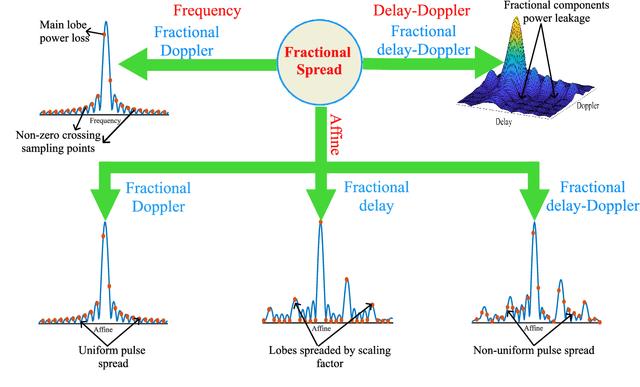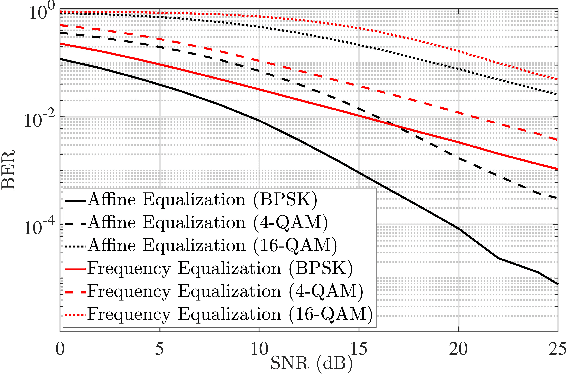Abdelali Arous
A Unified Framework for Adaptive Waveform Processing in Next Generation Wireless Networks
Oct 14, 2025



Abstract:The emergence of alternative multiplexing domains to the time-frequency domains, e.g., the delay-Doppler and chirp domains, offers a promising approach for addressing the challenges posed by complex propagation environments and next-generation applications. Unlike the time and frequency domains, these domains offer unique channel representations which provide additional degrees of freedom (DoF) for modeling, characterizing, and exploiting wireless channel features. This article provides a comprehensive analysis of channel characteristics, including delay, Doppler shifts, and channel coefficients across various domains, with an emphasis on their inter-domain relationships, shared characteristics, and domain-specific distinctions. We further evaluate the comparative advantages of each domain under specific channel conditions. Building on this analysis, we propose a generalized and adaptive transform domain framework that leverages the pre- and post-processing of the discrete Fourier transform (DFT) matrix, to enable dynamic transitions between various domains in response to the channel conditions and system requirements. Finally, several representative use cases are presented to demonstrate the applicability of the proposed cross-domain waveform processing framework in diverse scenarios, along with future directions and challenges.
Spreading the Wave: Low-Complexity PAPR Reduction for AFDM and OCDM in 6G Networks
May 03, 2025



Abstract:High Peak-to-Average Power Ratio (PAPR) is still a common issue in multicarrier signal modulation systems such as Orthogonal Chirp Division Multiplexing (OCDM) and Affine Frequency Division Multiplexing (AFDM), which are envisioned to play a central role in 6G networks. To this end, this paper aims to investigate a novel and low-complexity solution towards minimizing the PAPR with the aid of a unified premodulation data spreading paradigm. It analyze four spreading techniques namely, Walsh-Hadamard transform (WHT), Discrete Cosine transform (DCT), Zadoff-Chu transform (ZC), and Interleaved Discrete Fourier transform (IDFT), which assist in preallocating energy prior to OCDM and AFDM modulation. The proposed method takes advantage of the inherent characteristics of chirp-based modulation to achieve a notable reduction in PAPR at minimal computational load and no side information as compared to past solutions, such as Partial Transmit Sequence (PTS) or Selected Mapping (SLM), which suffers with a high computational complexity. The proposed method has an additional benefit of achieving an improvement in phase selectivity by increasing chirp parameters of AFDM and quadratic phase of OCDM, which amplifies the robustness in doubly dispersive channels. It further reduces interference by smoothing the output spread signal. The analytical and simulation results demonstrate an improvement in the overall energy efficiency and scalability of large ioT sensor networks.
 Add to Chrome
Add to Chrome Add to Firefox
Add to Firefox Add to Edge
Add to Edge